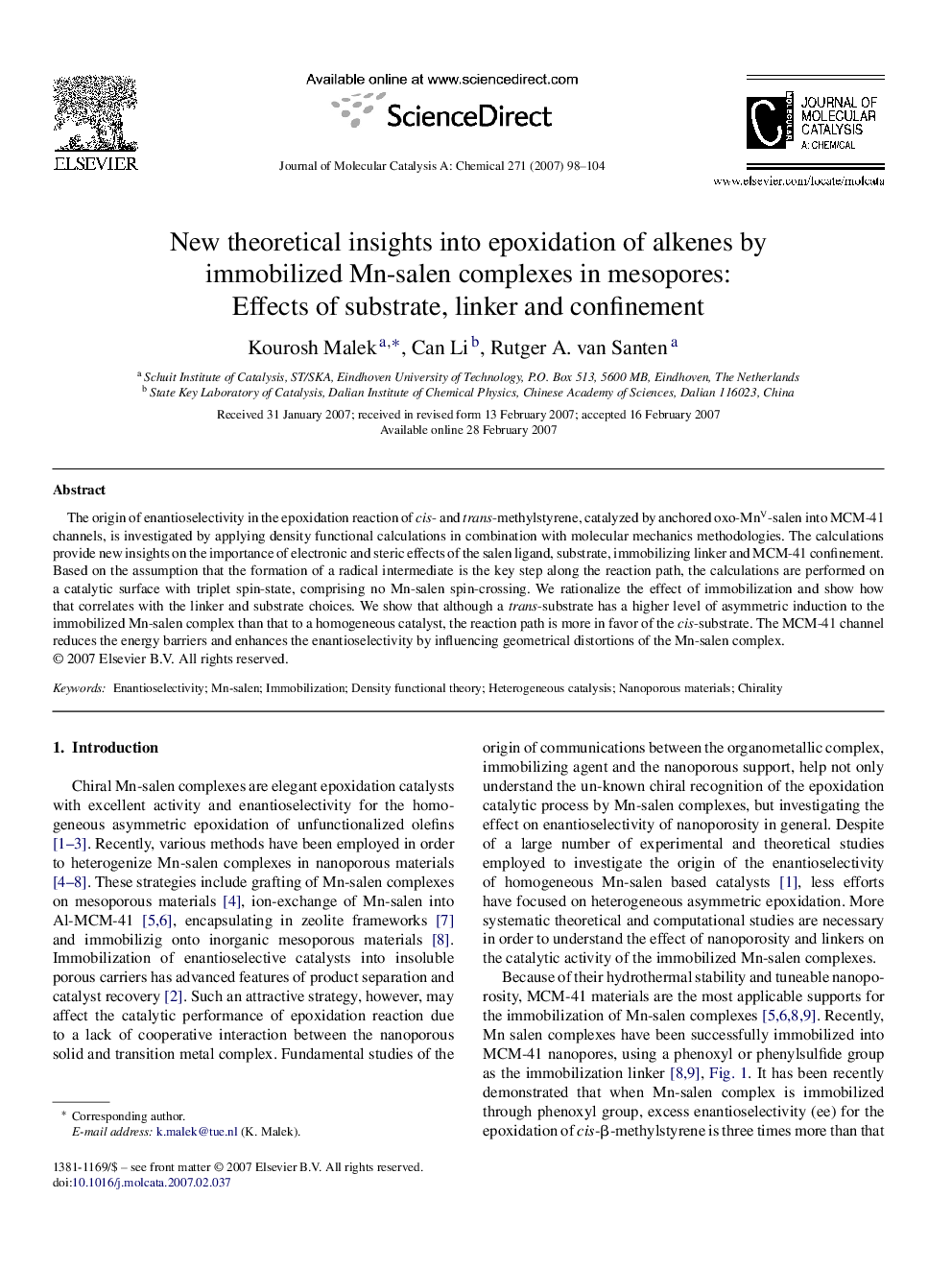| Article ID | Journal | Published Year | Pages | File Type |
|---|---|---|---|---|
| 67811 | Journal of Molecular Catalysis A: Chemical | 2007 | 7 Pages |
The origin of enantioselectivity in the epoxidation reaction of cis- and trans-methylstyrene, catalyzed by anchored oxo-MnV-salen into MCM-41 channels, is investigated by applying density functional calculations in combination with molecular mechanics methodologies. The calculations provide new insights on the importance of electronic and steric effects of the salen ligand, substrate, immobilizing linker and MCM-41 confinement. Based on the assumption that the formation of a radical intermediate is the key step along the reaction path, the calculations are performed on a catalytic surface with triplet spin-state, comprising no Mn-salen spin-crossing. We rationalize the effect of immobilization and show how that correlates with the linker and substrate choices. We show that although a trans-substrate has a higher level of asymmetric induction to the immobilized Mn-salen complex than that to a homogeneous catalyst, the reaction path is more in favor of the cis-substrate. The MCM-41 channel reduces the energy barriers and enhances the enantioselectivity by influencing geometrical distortions of the Mn-salen complex.
Graphical abstractWe performed calculations based on density functional theory in combination with molecular mechanics methodologies to investigate the origin of enantioselectivity in the epoxidation reaction of cis- and trans-methylstyrene, catalyzed by immobilized Mn-salen in MCM-41 channels. Our calculations provide new insights into the importance of electronic and steric effects of the salen ligand and substrates and the interplay with the immobilizing linker and MCM-41 confinement.Figure optionsDownload full-size imageDownload as PowerPoint slide
